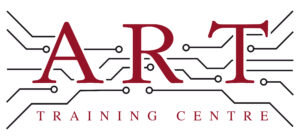Definition
Curing is a process in electronics manufacturing that involves hardening or setting materials, such as adhesives or solder, through heat or chemical reactions. This process is crucial for ensuring the durability and reliability of electronic components and assemblies. Curing is an essential component in the production of printed circuit boards (PCBs) and is vital for achieving strong bonds and proper functioning of electronic devices.
How It’s Used in the Industry
In electronics assembly, curing is applied primarily in the soldering process and the bonding of components. The technician first applies solder paste or adhesive to the designated areas of the PCB. Next, the assembly is subjected to heat in a reflow oven or curing oven. This heat activates the solder or adhesive, allowing it to flow and bond with the surfaces. After cooling, the cured material solidifies, providing mechanical strength and electrical conductivity. For both trainees and experienced professionals, understanding curing is critical, as improper curing can lead to faults and failures in electronic devices.
History & Origins
Curing became common in electronics manufacturing during the 1970s with the rise of printed circuit boards (PCBs) and surface mount technology. As the industry evolved, standards such as IPC-A-610 were developed to ensure quality and reliability in electronic assemblies. Early adoption of curing processes was driven by the need for stronger, more reliable connections in increasingly compact and complex electronic devices, paving the way for modern manufacturing techniques.
Variations
There are several variations of curing processes in electronics, including thermal curing, UV curing, and chemical curing. Thermal curing involves heating materials to initiate hardening, while UV curing uses ultraviolet light to trigger the curing reaction. Chemical curing relies on specific chemical reactions to solidify materials. Each method has its advantages and is suited for different applications, such as adhesive bonding or soldering, making it essential for learners to understand these differences for effective use in various contexts.
Modern Applications
Today, curing is integral to electronics production, particularly in surface mount and through-hole assembly techniques. It ensures that solder joints and adhesive bonds meet the stringent quality and reliability standards set by IPC. Curing processes are also critical in the repair of electronic devices, as proper curing can restore functionality and extend the lifespan of components. Continuous advancements in curing technology enhance the efficiency and effectiveness of modern electronics manufacturing.
Practical Tips & Training
When working with curing processes, it’s essential to follow safety guidelines, such as using personal protective equipment and ensuring proper ventilation. Inspect cured joints for uniformity and strength using visual and mechanical testing methods. Familiarity with tools like infrared thermometers and curing ovens is beneficial. Structured training and certification in curing techniques are vital for developing the skills necessary to produce high-quality electronic assemblies.


